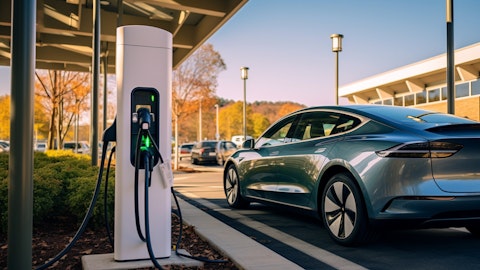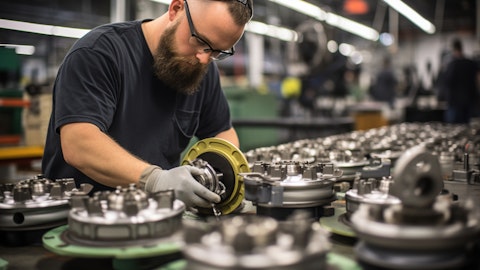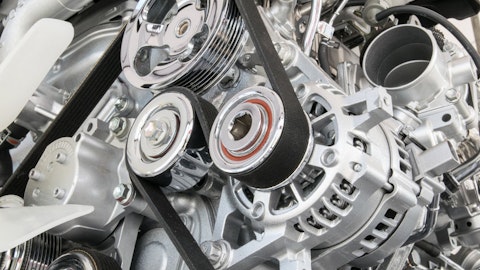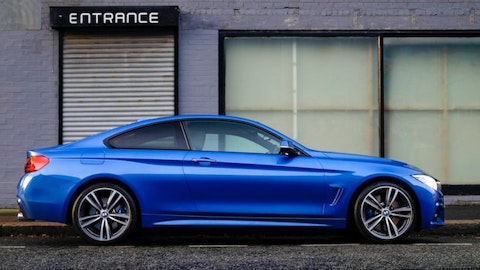Christopher May: Yes, specifically to the electrification products inside of our backlog. There’s not a lot of overlap with our existing ICE business. As you know, AMG is going into multiple derivatives as we talked about previously. So that continues to expand on that set. But some of the announcements over the last year that we’ve talked about, especially in the China and India markets, those are incremental to us. But we do see a little bit of overlap on the component side. So the extent that ICE is stronger. Obviously, our ICE business would pick up any slack from the component side. That’s how I think about the electrification.
James Picariello: That’s helpful. Thanks. And then just my follow-up is, as certain OEMs consider a pivot to hybridization or an emphasis on it, as a full driveline supplier, what could be the conceivable fastest turnaround to get an existing ICE driveline to incorporate hybrid? Just high level thoughts on that.
David Dauch: James, for us, the product components and subassemblies that we manufacture between ICE and hybridization are very similar to one another. So we can get to the market very quickly without a lot of change. It’s really what the OEMs, how they want to identify the type of hybridization that they want to put into their vehicles. But again, that could be a positive for our company.
Christopher May: Yes. Absolutely. James, keeping perspective, a few years back, some of our customers had some large truck platforms that were hybrid. It was the exact same axle for us.
James Picariello: And that would entail additional content for you potentially as well, right?
Christopher May: There is potential, especially on some of our VCS business as they have. Depending on obviously how they — what type of engine signs, et cetera, inside of a vehicle, but potentially, yes.
James Picariello: Thank you.
Christopher May: Thanks.
Operator: Our next question comes from John Murphy from Bank of America. Please go ahead with your question.
John Murphy: Good morning, guys. Surprisingly, I have more questions on the backlog. When you look at this 50% is EV, does that include EV and hybrids? And I wonder if you could maybe give us a split there? And also, Chris, slide 14, you gave us this great $220 million attrition against the $300 million gross. So we had a net new business backlog and roll on in $24 million of $80 million. I just wonder if you have some similar guidance or something you’d give us there for ’25 and ’26, so we could back into a net new business backlog?
Christopher May: Yes. So let’s start with the first question as it relates to our EV backlog, it’s all about with the exception technically in the AMG product. As you know, we supply is technically a hybrid, but it’s an electrified axle, but the rest is all BEV in terms of that half, not hybrid. In terms of how we think about attrition going forward, as you know, this is a little bit larger year for us. There was a couple of platforms that we supplied that ceased production. But as you go forward, we typically think about somewhere between $100 million to $200 million of attrition on an annual basis. So you can use midpoints of those going forward for the time being.
John Murphy: Okay. And then just one more follow-up. I mean in this, you are not accounting for potential upside in the mid CUV program, the GM is relaunching the RAM HD, any upside in GMT programs or the full-size truck at GM. I mean there’s no accounting for that at all in this backlog whatsoever?
David Dauch: No, that’s all in our core business. And the only thing we have the backlog, John, is do an incremental business. We consider that to be a replacement business, which IS part of our core financials.
John Murphy: Okay. And Chris, you mentioned margins on this near and long term on this backlog as it rolls on. If you could just kind of talk about maybe the difference between the EV and the ICE backlog?
Christopher May: We’ve not provided specific margin guidance on splits from EV to our ICE business in the future. But as we’ve stated previously, our goal is to drive maximum financial performance in use to ultimately replicate what we have today. But that is a long way to go. They have long tails before they reach volumes, et cetera. They’ll go through a normal cycle of a product, right? They’ll have investments upfront. I have no volume start up, and then they’ll get into volume later in their life cycle.
David Dauch: It’s no different. I mean we’re generating strong margins on our ICE business today. But because we got size and scale, the EV business doesn’t have the size and scale to date. So you can actually expect those margins will be lower. But as that size and scale grows over time, you can expect that we’ll stay focused on delivering on our financial hurdles.
John Murphy: Very helpful guys. Thank you so much.
Christopher May: Thanks, John.
Operator: Our next question comes from Winnie Dong from Deutsche Bank. Please go ahead with your question.
Winnie Dong: Hi. Thank you so much. Can you guys hear me?
Christopher May: Yes. Good morning.
Winnie Dong: Good morning. I was wondering if you can provide an update on the labor situation. It was a very helpful slide including the deck. Maybe if you can go into any sort of latest changes in the availability of labor? And then what kind of improvement you’re anticipating and that’s been guided within the outlook?
David Dauch: Yes. Winnie, this is David. Labor is going to continue to be the problem for the industry going forward here. It’s not just an American Axle issue. It’s an industry and just an overall economic issue. There’s a scarcity and labor that’s out there today. Clearly, we’re doing our necessary things in order to secure our labor going forward. We’re making adjustments in base ways and fully loaded labor cost. We’re bringing, I think, incremental workers in where we need to, even temps if we have to. We’re investing heavily in automation and robotics right now to address any shortfalls that we might have on the labor side. And we’re obviously driving productivity and efficiency to try to free up labor in our existing plants that can be reallocated to other facilities or other work within those facilities.




